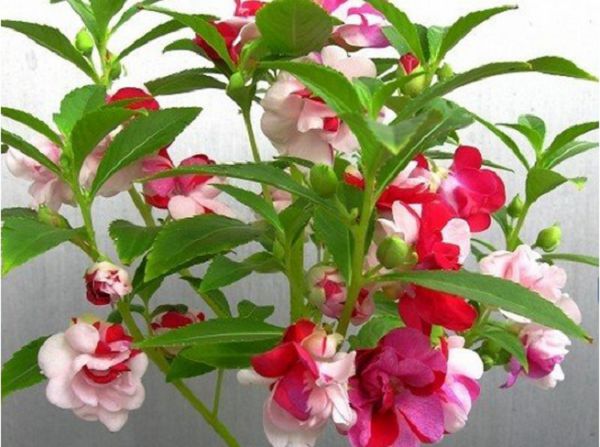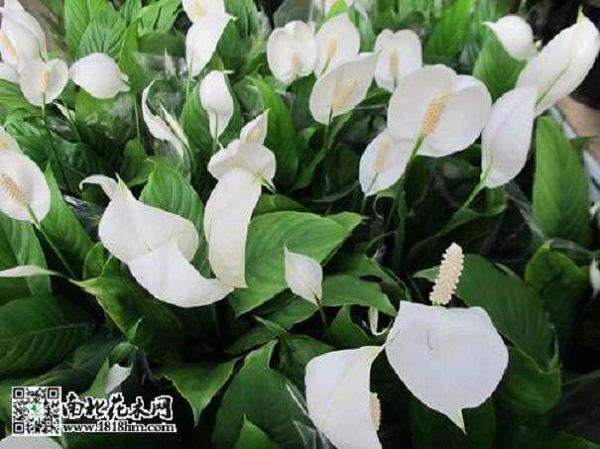How do flowers propagate by cuttings? Methods and matters needing attention of cutting propagation
Cutting propagation is to make use of the regeneration ability of plant roots, stems, leaves and buds to make it take root and sprout to form new plants under moderate conditions. The advantages are: maintain the characteristics of each plant; bloom earlier than seed reproduction; breeding method is simple, convenient to obtain materials, high survival rate; when the conditions are available, all seasons can be carried out; species that can not bear fruit can be propagated by this method. The disadvantage is that the root system of the cutting plant is shallow and the growth period is short. Stem cuttings include hardwood cuttings and soft cuttings.
First, hardwood cutting: pomegranate, hibiscus, hibiscus, crape myrtle, spring, poinsettia and other deciduous flowers and trees often use this method. Before the sap flows in early spring. Select 1-year-old, 2-year-old strong and full branches, select the middle section, cut the branches into 10mur15cm long branches as cuttings, need to carry 2murs and 3 buds, and the top buds should be full and intact. The upper end is 0.5 cm above the bud, cut into a flat mouth, and the lower end is 0.5-1 cm under the bud, cut into an oblique mouth, and the bud is on the side of the tip of the oblique mouth, which is inserted into the cutting medium with a depth of 1 × 2 cuttings. Hardwood cuttings most tree species are buried in the ground before winter and replanted in spring. Some tropical and subtropical flowers and trees can also be cut in advance in the greenhouse.
Second, soft wood cutting: greenhouse flowers such as inverted golden bell, geranium, begonia, open grass flowers such as a string of red, dahlia, beautiful cherry, evergreen broad-leaved flowers such as jasmine, rhododendron, Michelia, camellia, sweet-scented osmanthus, etc. From late May to September. Select the semi-lignified branches with leaves in the same year as cuttings, such as the semi-lignified branches at the lower end of the proximal tip after anthesis. The cuttings are about 6 Mel 10 cm long and should have 2 Mel 3 buds. The cutting method is like a hard branch, and the lower leaves are cut off. The upper leaves can be cut off as appropriate to reduce evaporation. The survival rate of cutting and inserting is the highest. When cutting poinsettia, geranium, oleander and other cuttings, a large amount of juice is often discharged from the incision, which must be inserted after the incision is dry, otherwise the incision is easy to rot and difficult to survive.
Third, leaf insertion: Begonia, chrysanthemum, stone lotus, tiger tail orchid and other species that can grow adventitious roots and buds at the vein or petiole, and can be propagated into new plants. When cutting a leaf with a petiole, keep the petiole about 3 cm, cut off part of the tender leaf margin, and insert the petiole into the matrix; if there is no petiole, you can cut it with a knife at the intersection of the leaf vein and lay the leaf flat on the matrix to make it in close contact with the matrix, or fix the leaf vein in the matrix with a bamboo stick, which can root at the vein and grow into a new plant. Tiger tail orchid for fleshy sword-shaped leaves, can be transversely cut into about 5 cm leaf segments for cuttings, inserted directly in the sand, do not be upside down, new roots can occur at the base to form new plants.
Fourth, leaf bud insertion: rubber tree, eight immortal flowers, jasmine, mulberry and so on in the leaf insertion, although its petiole and leaf axil can take root, but can not sprout, therefore, can not grow into a new plant. Therefore, it is necessary to use leaf cuttings with an axillary bud at the base in order to develop into new plants.
Fifth, root insertion: stick stem begonia, peony, Lingxiao, kiwifruit, hypericum, wax plum, persistent root Fu Lukao, lotus peony and so on. Flowers that can grow adventitious buds on their roots can be propagated by root cuttings. When the flowers and trees change pots, cut 5mur10cm root segments, insert them directly or obliquely into the soil, not upside down, the upper end is flat with the soil surface, and then cultivate the soil moderately after the new buds grow.
No matter what kind of cutting method is adopted, we must pour enough water after cutting, and then cover the cutting pot with glass or plastic film, in order to maintain a certain temperature and humidity, put it in the semi-shade, strengthen management, and then transplant and culture after rooting. In order to make the cuttage survival rate high, in addition to selecting good cuttings, the substrate is also very important, the substrate should not only have good drainage, but also have a certain degree of water retention. Vermiculite, perlite, slag and rice bran ash are better cutting substrates. The substrate should be kept above 20 ℃, that is, the air temperature should be above 25 ℃, so that the cuttings can be easily healed and rooted.
Related
- What if the leaves of potted flowers turn yellow?
- Florescence Control of several Flowers
- Anti-freezing technology and post-freezing nursing technology of flowers
- What is the classification of flowers? What are the common methods of flower classification?
- Prevention and control of alkali and acid damage of flowers in courtyard
- Technology of Anti-freezing and restoring growth of Flower seedlings in greenhouse and greenhouse
- How does flower fertilization not hurt the root? Fertilization technology of flowers
- Key points of disinfection in flower greenhouse
- Several pesticides that are banned or used cautiously in flowers
- How to fertilize the flowers that watch the leaves?



